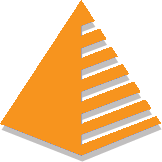How Much Does QAIB Cost?
The Full Study price is $975 (preorder and save $180) and includes a Derivative Works license to use data in customized communications of up to 200 copies. Additional licensing is available for Derivative Works as well as Report Distribution.
The QAIB Advisor Edition is available on QAIB Advisor Studio, DALBAR's online portal for advisors for a subscription price of $250 per year.
How can I get QAIB updates and promotions?
Sign up for the QAIB Updates & Promotions Newsletter to get notifications directly to your inbox.
How do I find out more information about QAIB Variable Annuity?
Download the Abstract for QAIB Variable Annuity here or email us for more information at QAIB@dalbar.com.
Can I use data from the reports in Derivative Works such as customized communications?
Most QAIB products allow the purchaser to use its contents in customized communications for production of a selected number of copies (see Copyright Agreement within the deliverable).
What is the difference between the Full Study and the Advisor Edition?
The Full Study, for $975 is the complete report and includes copyrights for purchasers to use the data in Derivative Works for up to 200 copies (for higher level licensing email colearylima@dalbar.com).
The Advisor Edition, available with a subscription to Advisor Studio, is an investor summary and excludes data found in the Full Study to make it more comprehensible to the average investor. This report is able to be customized for one Advisor and can be distributed in its entirety to the Advisor’s clients. Copyrights are included for subscribers of Advisor Studio for Derivative Works up to 200 copies.
How do I get a QAIB report that displays “Compliments of [my name]” on the cover?
Purchasers of the Advisor Edition are able to brand the cover to display the name of one advisor, his or her firm name, address, phone number and email. This will populate automatically using the information collected when downloading the edition from your Advisor Studio account.
How can I get a QAIB report branded with our firm logo on the cover?
Firms may purchase an Advisor Edition of the QAIB report and white label the cover with their logo for firm-wide client distribution (prices based on distribution level). Please email QAIB@dalbar.com with your request.
How Can I Share QAIB Data with the public?
Each item in the QAIB Store has copyright rules. These are listed on the store page for each item.
Can I share QAIB publicly through my website?
No. However, the Advisor Edition may be posted in its entirety under a password protected URL for the Advisor to share with clients.
If I lost the report, lost access to the report or my download is corrupt, how can I request another copy?
Please email QAIB@dalbar.com to request access to your purchased report.
Can I Get a Custom Analysis?
For more information on creating a custom analysis or presentation using the QAIB data and methodology, contact Cory Clark at QAIB@dalbar.com.
What is the “Average Investor Return”?
QAIB uses data from the Investment Company Institute (ICI), Standard & Poor’s, Bloomberg Barclays Indices and proprietary sources to compare mutual fund investor returns to an appropriate set of benchmarks. The study utilizes mutual fund sales, redemptions and exchanges each month as the measure of investor behavior. These behaviors reflect the “Average Investor.” Based on this behavior, the analysis calculates the “average investor return” for various periods. These results are then compared to the returns of respective indices.
How does QAIB Calculate Investor Profits or Loss?
QAIB uses the aggregate balances of mutual fund investors each month to calculate investor profits or loss after all performance limiting factors are considered. This reflects the market gain or loss that the average investor would see on a statement. Additional research is used to identify solutions that reduce the underperformance.
What Causes the Gap Between the Average Investor Return and an Appropriate Index?
Four factors cause the gap between investor returns and an appropriate index:
- Availability of capital to investors for the entire period being measured.
- Need for capital by investors before the end of the period being measured.
- Expenses and under performance of the funds.
- Investors’ irrational behavior, based on generally accepted but misleading opinions.
What Does Voluntary Investor Behavior Include?
Voluntary investor behavior includes:
- Delaying an investment decision
- Withdrawing funds before they are needed or withdrawing from a less than optimal source
- Reinvesting after there is evidence of a market recovery
Does Average Investor Return take into account fees?
QAIB measures assets after all costs and expenses are deducted and flows after all sales charges are paid. While some measures attempt to make adjustments for differing share classes and expense ratios, QAIB makes no such adjustments since only net assets and net flows are used.
Can QAIB returns be compared to fund returns as asset weighted returns can?
No. QAIB reports the returns that are most visible to most investors, the investor’s personal return and the most widely used indexes.
The decision to compare the most visible measures of return allows QAIB to reflect the investors' perception and therefore to properly define the problem.
Having defined the problem, methods have been developed and are being developed to narrow the gap between these two measures. QAIB presents an "investor's" view of the fund.
Asset weighted returns by definition ignore the time during which the investor is out of the investment and do not provide a measure of the lost opportunity. As such asset weighted returns are a “fund’s” view, reflecting only returns when money is in the fund.
Can soft dollars be used to pay for QAIB?
Soft dollars can be used to pay for this research. The QAIB research directly benefits investors and there is no distinction made in the regulations between economic research and behavioral research.



%20(1).png)

SUBMIT YOUR COMMENT